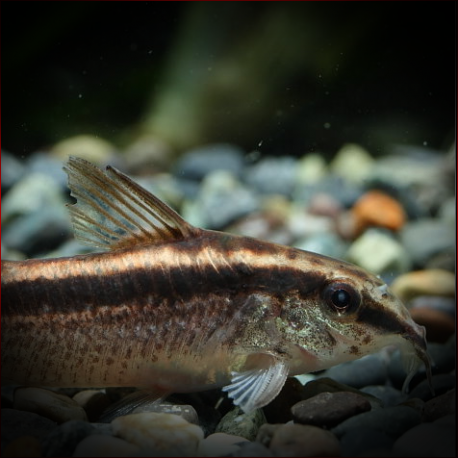More info
Datasheet
| Minimum Tank Size | 60 litres / 15.85 US gallons |
| Maximum Size | 4.0cm / 1.57inches |
| Temperature | 20°C / 68.00°F - 26°C / 78.80°F |
| Hardness | 2.02dgH / 36ppm - 12.05dgH / 215ppm |
| pH | 5.0-7.5 |
Behaviour
Corydoras Gracilis are known for their peaceful and gregarious nature, thriving in groups of at least 4-6 individuals. They display facultative air-breathing behavior, occasionally rising to the water's surface to gulp air. However, caution is advised when handling them, as their stiffened pectoral-fin spines can cause painful stings, possibly due to secretions from axillary glands located at the base of each spine.
Feeding and Diet
As foraging omnivores, Corydoras Gracilis readily accept a variety of sinking dried foods and small live or frozen options such as chironomid larvae and Tubifex. A diverse diet ensures optimal health, as they should not rely on leftovers or cleaning duties in the aquarium.
Reproduction & Dimorphism
Breeding Corydoras Gracilis follows similar patterns to other species within the genus. To encourage spawning, maintaining a ratio of two or more males per female is recommended. Eggs are typically deposited on aquarium glass, among vegetation, or within spawning mops. Female Gracilis tend to be larger than males, with sexually mature individuals presenting broader and deeper bodies.
Habitat and Distribution
In their native habitat of the central Amazon basin in northwestern Brazil, Corydoras Gracilis thrive in minor tributaries with dense riparian vegetation and acidic, tannin-stained water. Unfortunately, their habitats have been impacted by agricultural conversions and dam constructions, especially near Pôrto Velho on the rio Madeira.
Aquarium Setup
For a thriving aquarium environment for Corydoras Gracilis, a minimum tank size of 60 litres is recommended, with water conditions mimicking a pH range of 5.0-7.5, hardness of 36-215ppm, and a temperature of 20-26°C. A substrate of fine sand is ideal, along with driftwood, roots, branches, and dried leaf litter to simulate their natural habitat.

